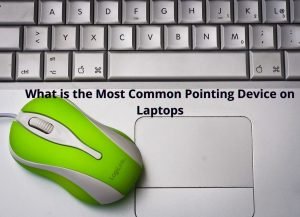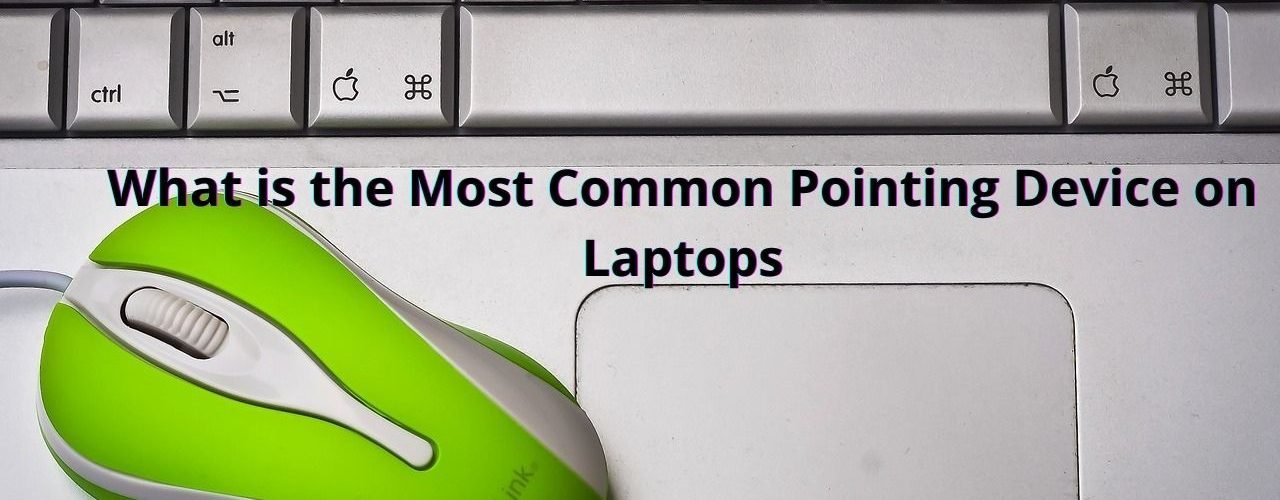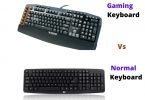
Laptops are a great invention. The beginning of the era of portable computers. Who would’ve thought that it would be possible to travel with your computer?
Not just that, with the addition of portability, came several other factors that resulted in laptops being a successful and wholeheartedly accepted invention. I am talking about Pointing Devices.
Cautiously placing the ‘s’ in ‘pointing devices’ to stress over the fact that there isn’t just one of them.
Although most certainly it comes with a built-in pointing device, there isn’t any doubt over the existence of various other external ones that can function similarly once connected to your laptop.
Holding myself here, I’d first like to describe what is a pointing device and then What is the Most Common Pointing Device on Laptops? Well aware of the fact that if you are reading this article, you most certainly are familiar with the literal meaning of the term.
However, to follow the tradition, let me start by explaining what it really is.
What is a Pointing Device in a Computer?
If put in simple words, a pointing device is an input device that lets you give commands to the computer.
By commands, I mean the ability to control and provide data to the computer. This is done via the movement of a physically held device such as the mouse, thereby using gestures to input data.
To register and demonstrate that movement, a pointer or cursor on the screen allows you to view any gestures performed, such as a drag and drop or a click.
The most commonly known and practically experienced pointing device is a mouse. As renowned as it is, sometimes it is misinterpreted and considered as the only pointing device.
As to why is a mouse often called a pointing device, well, that’s because it is a pointing device, probably the first ever to appear.
Although later inventions have led to many new pointing devices appearing in the market, a mouse tends to stay as the one still widely used and popularly demanded.
The major reason is the convenience and habitually associated with it.
Since it has been there for as long as a computer can date back, the mere thought of replacing it with anything less easy to use and less user-oriented than a mouse is simply impossible and irrevocable.
Talking about the availability of various pointing devices reminds me to get back to the topic and discuss what is the most common pointing device on laptops.
To do so, I will have to put light on the different pointing devices for a laptop.
What is the Most Common Pointing Device on Laptops?
Below are the most common pointing devices that a laptop contains:
1. Computer Mouse
Whether it is a PC or a laptop, a mouse has always been the most common pointing device.
To the surprise of most users, this peripheral is named after the animal – mouse, reportedly because it moves the cursor on the screen fast and makes slight clicking sounds, identical to this rodent.
In 1968, the device was initially developed to be externally attached to your computer via a wire; however, as time progressed, technological advancements meant that now a wireless connection was also possible by means of Bluetooth.
Either way, it allows you to operate and command your device to perform certain actions.
From the look of it, a mouse consists of two clickable buttons; one on the right, namely the right-click, and the other on the left.
The right-click usually helps in most of the selection part, whereas the left click enables the opening up of the drop-down menu. Between the two clicks is a wheel that is primarily intended to help users scroll up and down the screen.
Finally, to act as a signal to the cursor on your screen, there is a laser at the bottom of the mouse, which again is a gift of technology that has led to the replacement of the now-outdated roller ball.
As conventional and common as a computer mouse is, equally unique and unorthodox are its types.
There are quite a few in the market that has not been seen or heard of by a majority of the population (keeping aside the mechanical and wireless mouse).
A. Finger Mouse
As the name suggests, a Finger Mouse is functionally used by a finger – the index finger. It is designed to be strapped around it and then operated with your thumb.
This extremely small, highly portable, and incredibly convenient invention tends to be a great travel partner that connects to your device wirelessly and can operate the cursor from as far as 30 feet of distance.
B. Foot Mouse
To the joy of those with hand-related disabilities came the Foot Mouse.
Consisting of features that are precisely the same as those of a traditional mouse, this one has an exception in that it is operated with your foot. It comprises the same clickables on the right and left and an option for cursor movement.
C. Camera Mouse
A Camera Mouse is unique and perhaps, one of the latest inventions. This is again to aid people with some sort of disabilities whereby they can control the cursor on their computer by a mere movement of their head.
You heard me! A Camera Mouse has no physical existence; instead, it is an application that Boston University initially developed. This application uses the camera of your laptop and your head’s movement to drag the cursor around and register any clicks.
Other Common Pointing Devices
Let’s take a look at each one!
1. Touchpad
A laptop usually comes with a touchpad built-in. It is located just below the keyboard and generally at the center.
This rectangular surface consists of a tactile sensor that enables you to drag your finger around it, which accordingly sends a signal to the monitor to register the movement.
Along with this, many touchpads also have 2 distinct buttons within the rectangular space. These act as the right and left clicks and perform a role similar to that of a mouse.
If the buttons are not prominent, they are still there, and you can feel it by the audible clicking sound made upon the press.
2. Finger Tracking
The trend of touch screens has risen immensely. Not only does it serve to be a convenient option, but also one that is suitable for users and does not need the inclusion of additional devices.
The same is the case with laptops. Although not all, newer and relatively advanced versions now include touch screens. This means that you can use your finger’s touch on the screen to execute all the tasks a pointing device performs.
Be it a click (the tap of your finger), scroll (the dragging of your finger), or the drop-down menu (the forced touch of your finger).
3. Trackpoint
Situated somewhere between your keyboard, a Trackpoint is a small point (usually red in color) that acts as a pointing device.
To establish a pre-condition here, it is not as efficient as any other device on this list, yet it is commonly used for the purposes of cursor movement. As to why it is not effective, perhaps its size could be called the major reason for it.
4. Joystick
Nothing is more perplexing than identifying, ‘is the joystick a pointing device?’ It will surely take some more time for me to ascertain the reason for such confusion revolving around joysticks.
However, to break the ice, a joystick is one of the pointing devices. Yes!
The only sane justification that I can come up with is the fact that it is primarily a gaming peripheral and, therefore, not one of the main devices attached to your laptop. But, when used that way, it does act like any other pointing device.
A joystick consists of a spherical lever that, upon rotation, sends a message to the laptop.
Undeniably, it isn’t the most worthwhile pointing device one would actually invest in, but it is a great solution in times of helplessness.
5. Stylus
A stylus is a pen-like input device that is used on touch screen devices, be it a computer, laptop, or tablet. It befits all!
This multipurpose pen can be used as a pointing device and an instrument to write, draw, and sketch with. Inflicting various benefits, this pen is a great CAD tool and hence, highly preferred by architects, artists, and designers.
6. Trackball Mouse
Just as the name depicts, it is a mouse with the addition of a trackball to it. It consists of the same components as a mouse does, i.e., the right click, left click, and in most cases, the wheel as well.
The only addition is a trackball which acts as a tool to move the cursor. This ball consists of sensors that recognize the rotation of the ball done via the thumb, and in response, the cursor on your screen changes positions.
7. Keyboard
Last but surely not least is the simple keyboard or gaming, which effectively acts as a pointing device too. Seldom put to practical use, once the option is activated, the arrow keys on the number pad can be used to control the cursor movement.
This is not a very common pointing device, but since I have been listing all of them, so why not this? Mechanical Keyboards For Gaming?
Conclusion
Choosing the right-pointing device is a matter of personal preference. There are users who choose a keyboard over a generic mouse – strange but true! Hence, recommending one perfect device is beyond my purview.
I could and have therefore mentioned the different types of it, ranging from the most common – the mouse to the rare ones – like the joystick and keyboard.
It is now upon you to choose which one adequately suits your definition of what and how a pointing device should be.
I hope this guide about What is the Most Common Pointing Device on Laptops is helpful to you.







